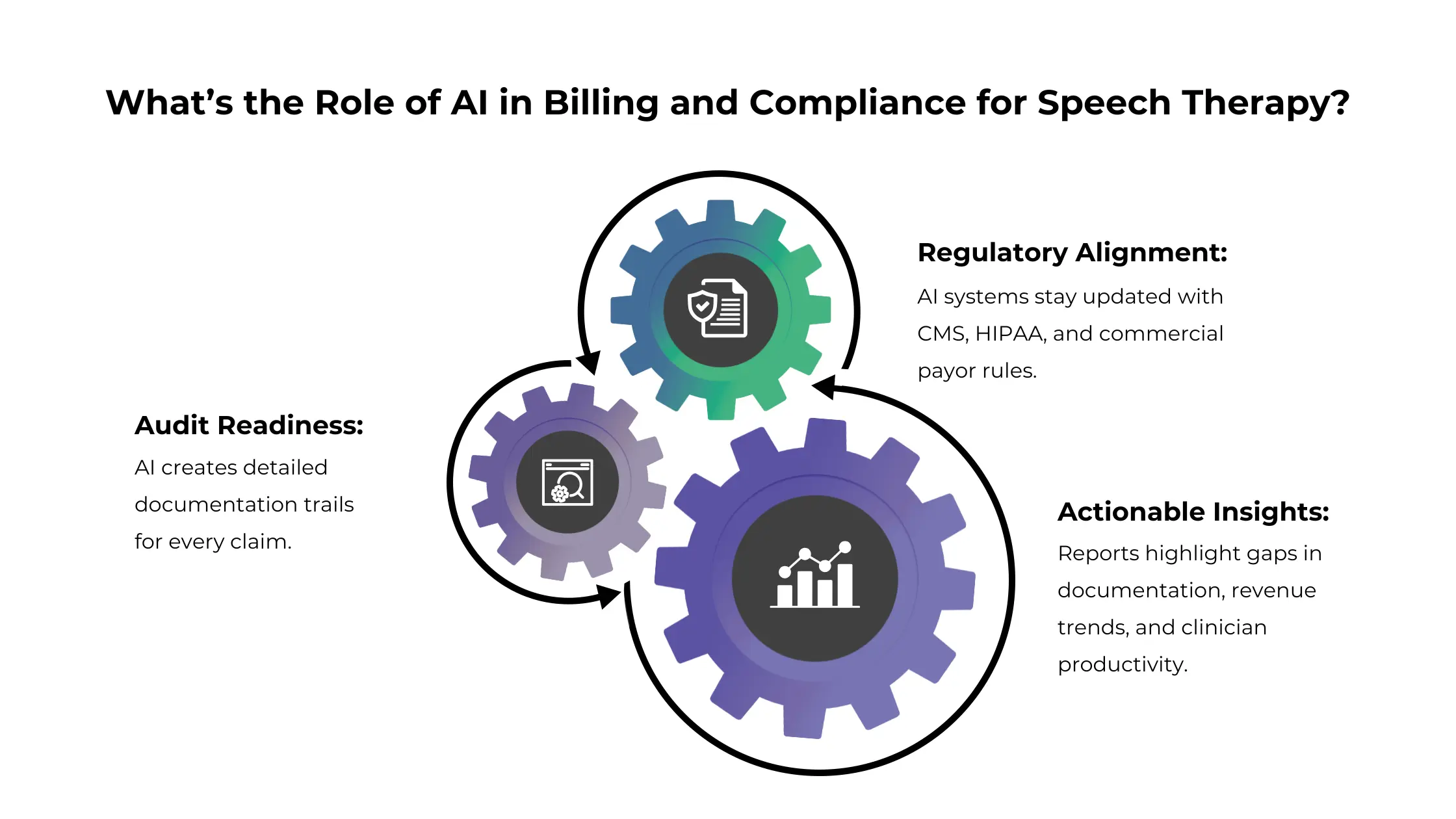Key Takeaways
- Understanding how AI can help boost revenue and ease admin burnout is significant to your clinic’s success.
- Speech therapy billing automation reduces claim denials and revenue leakage by automating coding, insurance verification, and compliance checks.
- Implementing AI tools tailored for speech pathology helps you spend less time chasing revenue and more time improving patient outcomes.
- Discover the fundamentals of establishing effective RCM.
Speech therapy clinics are no strangers to the challenges of managing financial workflows. From denied claims and revenue leakage to the complexities of insurance billing and MIPS compliance, maintaining a healthy revenue cycle can feel like a full-time job. Fortunately, AI revenue cycle management is transforming how practices approach billing, reporting, and reimbursement.
Whether you’re a solo provider or managing a multi-clinician practice, knowing how artificial intelligence can help you take control of your clinic’s revenue and reduce administrative burnout is helpful to your clinic’s success.
Table of Contents
Why Traditional RCM Falls Short in Speech Therapy
The financial health of a speech therapy clinic relies on accurate, timely billing. But manual revenue cycle management (RCM), more often than not, leads to:
- Denied Claims & Revenue Leakage: Small billing errors, missing codes, or incorrect patient data can delay payments or lead to outright denials.
- Complex Insurance Billing: Speech-language pathologists must navigate payor-specific rules and medical necessity requirements that vary widely.
- Manual Processes: Staff may spend hours inputting codes, checking eligibility, or chasing down payments.
- MIPS Reporting Gaps: Quality reporting requirements are often misunderstood or inconsistently documented, putting compliance at risk.
- Administrative Overload: With so much focus on RCM, less time is available for patient care and clinical growth.
This is where AI revenue cycle management steps in.
How Does AI Improve RCM in Speech Therapy Practices?
AI brings speed, accuracy, and predictive capabilities to every stage of the revenue cycle. Here’s how it directly addresses the pain points faced by speech therapy practices:
1. Automated Eligibility Checks
AI tools verify insurance details in real time before appointments. This reduces surprises during claim submission and ensures patients are properly covered for speech therapy services.
2. Smart Coding Assistants
AI reviews session notes and suggests the most appropriate CPT and ICD-10 codes. This minimizes human error, especially for practices without dedicated billing staff.
3. Predictive Denial Management
By analyzing past claims, AI flags high-risk submissions likely to be denied. That means practices can proactively adjust documentation or coding before submission.
4. Real-Time MIPS Tracking
AI helps ensure that MIPS reporting requirements are met during documentation. It prompts clinicians to include key quality measures in real time.
5. Faster Claims Processing
Claims are generated, validated, and submitted to payors automatically. AI can monitor claim status and escalate follow-ups as needed.
Can Automation Reduce Claim Denials for Speech Therapists?
Yes. When implemented strategically. Denied claims are often the result of small but critical oversights: missing authorizations, mismatched codes, or incomplete progress notes. AI revenue cycle management systems can cross-check every claim against known payer rules and historical data to reduce the risk of rejections.
In fact, research indicates that AI-driven automation not only reduces errors that may cause claim denials or payment delays but also improves the speed of claim approvals.

What’s the Role of AI in Billing and Compliance for Speech Therapy?
In healthcare, AI not only automates tasks but also brings intelligence to decision-making. In speech therapy billing, this means:
- Audit Readiness: AI creates detailed documentation trails for every claim.
- Regulatory Alignment: AI systems stay updated with CMS, HIPAA, and commercial payor rules.
- Actionable Insights: Reports highlight gaps in documentation, revenue trends, and clinician productivity.
How Do Speech Therapy Clinics Streamline RCM With AI?
The best way to get started with AI is to identify which parts of your revenue cycle are costing the most time or money. Then, work with a vendor that specializes in speech therapy billing automation and understands speech pathology reimbursement workflows.
Key features to look for:
- Seamless integration with your existing EHR
- Transparent AI recommendations with clinician override options
- Built-in MIPS tracking and compliance dashboards
- Insurance verification and denial management tools
AI revenue cycle management is a strategic advantage for speech therapy clinics that want to grow without being buried in paperwork. By streamlining billing, coding, and compliance processes, you’ll spend less time chasing revenue and more time improving patient outcomes.










